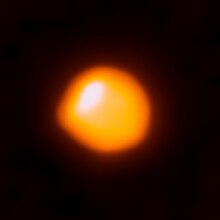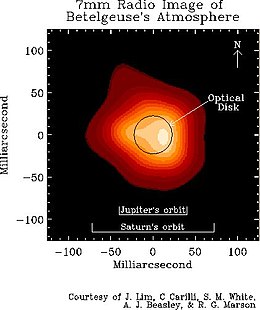hobbsyoyo
Deity
- Joined
- Jul 13, 2012
- Messages
- 26,575
Our friendly neighborhood supergiant Betelgeuse is giving signs that it may go supernova according to the popular science press. I expect the hype is a bit overblown but it's a cool thing to think about as it would about as bright as the full moon if it did happen. We're far enough away that it should be harmless as well. Betelgeuse went from being the 9th-brightest stars to almost invisible to the naked eye over the last few months although it should be noted that as a variable star, it does that from time to time.
It is so large that even though it is 700 light years away, we've actually got pictures of it as a disc rather than a pinpoint of light.

And yes, it really is asymmetrical like that:

1988/9 UV HST images of Betelgeuse showing asymmetrical pulsations with corresponding spectral line profiles

Radio image from 1998 (pre-Harper) showing the size of Betelgeuse's photosphere (circle) and the effect of convective forces on the star's atmosphere
https://en.wikipedia.org/wiki/Betelgeuse
It is so large that even though it is 700 light years away, we've actually got pictures of it as a disc rather than a pinpoint of light.

And yes, it really is asymmetrical like that:

1988/9 UV HST images of Betelgeuse showing asymmetrical pulsations with corresponding spectral line profiles

Radio image from 1998 (pre-Harper) showing the size of Betelgeuse's photosphere (circle) and the effect of convective forces on the star's atmosphere
https://en.wikipedia.org/wiki/Betelgeuse

